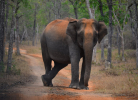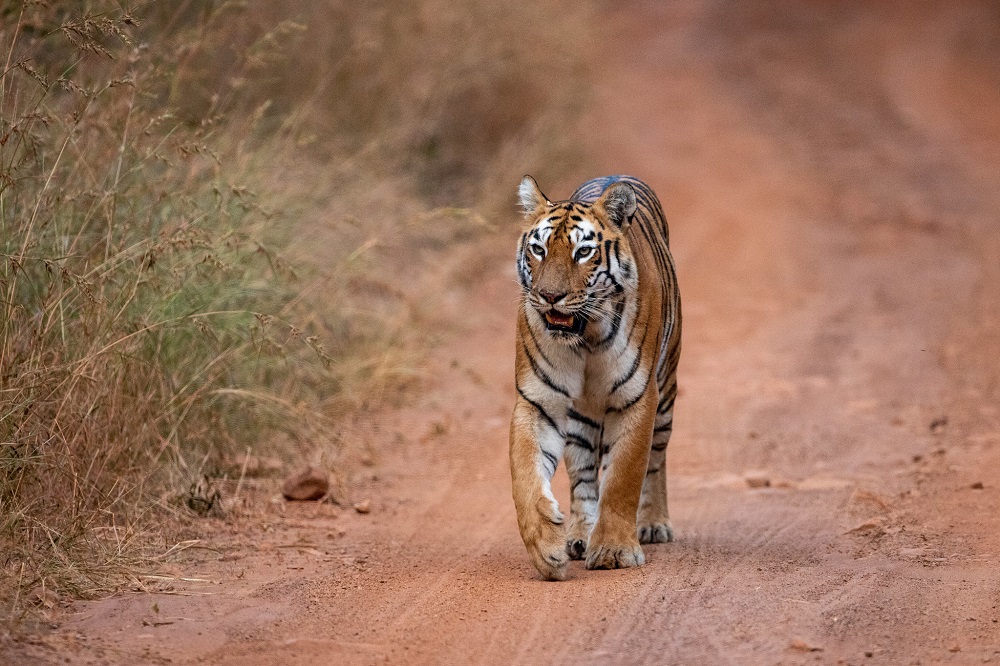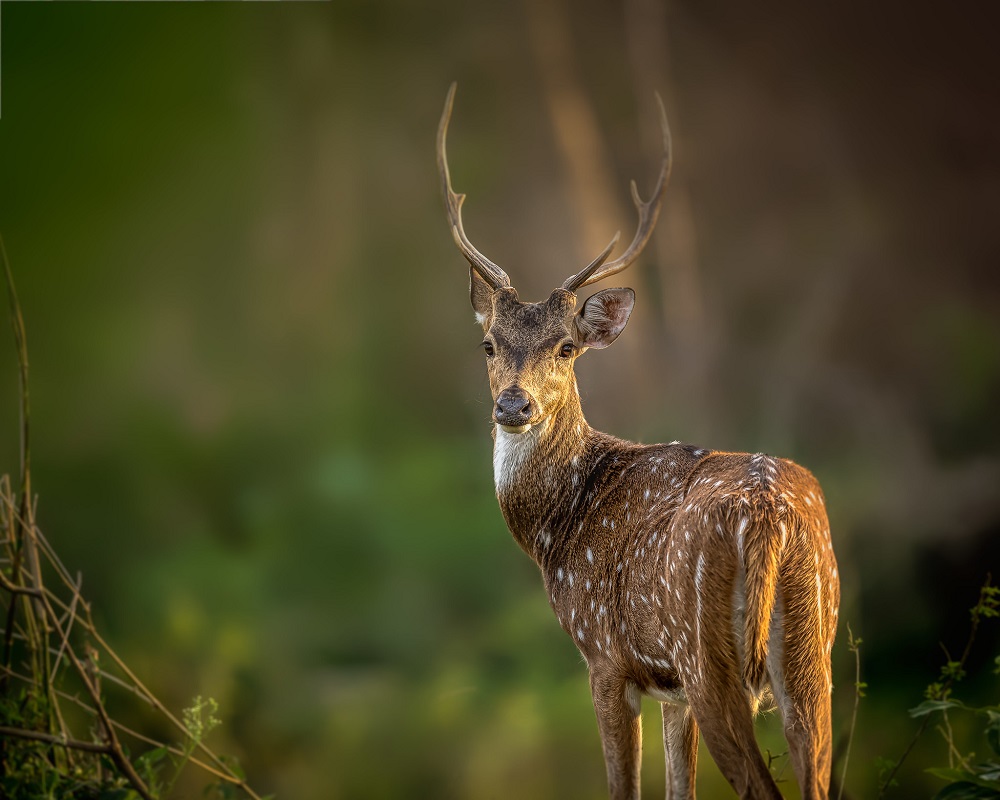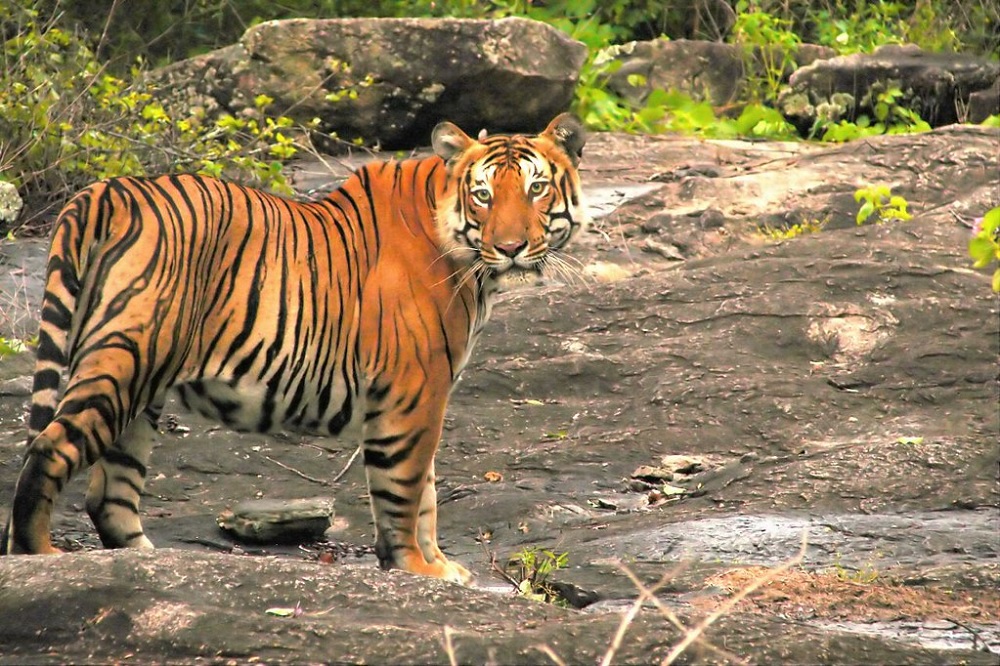Pench National Park
Pench National Park is shared between Chhindwara and Seoni districts of Madhya Pradesh. The park flourishes due to the lush Pench River flowing through the region. Due to the lush environment, wildlife thrived in this region. Do you know that the famous Jungle Book was inspired by this wildlife reserve?
Flora of Pench National Park
The main forest types that cover the park are teak, salai, saja, bijayasal and others. You can also find lush bamboo in certain regions. The white kulu trees are scattered around the park and are called as ghost trees, because of their vivid white color amidst the green foliage. The floor of the park is filled with grasses, bushes, and other smaller plants. The main tree of the park is mahua. The fruits of mahua are harvested by the tribes for brewing beer.
Fauna of Pench National Park
The iconic animal of the park is the endangered Royal Bengal tiger. Apart from tigers, there are 39 mammal species, 13 reptile species and three amphibians. Top animals to spot here are Indian leopard, wild boar, sambar, jackal, wild dog, barking deer, striped hyena, jungle cat, porcupine, four-horned antelope, nilgai, and others.
The park is also famous for birdwatching. There are more than 210 bird species found in the park, including the seasonal migratory birds. Top birds to spot are egret, red-vented bulbul, peafowl, crow pheasant, minivet, myna, lesser whistling teal, common kingfisher, herons, Indian roller, and others. The park is also home for four endangered vulture species.
Different Areas in Pench National Park
The park is divided into seven zones.
Turia : Turia is the most famous region in the park. Turia holds numerous waterbodies, especially streams. Spotting animals along the sides of the streams is very easy. This is the most commonly toured zone during safari. The zone is not open on Wednesday evenings.
Karmajhiri Zone : This zone holds Sitaghat, which is famous for birdwatching. You can also spot numerous animals in this zone, closer to Bodanala
Rukhad Zone : This is a buffer zone. You can spot many bison in this region. The zone is also famous for flowering plants.
Jamtara Zone : The entry to this zone is via Karmajhiri Zone. Spotting mammals is quite easier in this zone.
Teliya Zone : This is a buffer zone. The zone is closed on Tuesday evenings. Chances of spotting tiger are very low in this region.
Sillari Zone : This zone falls within the border of Maharashtra.This zone is open for exploration even during monsoon season. The zone is closed on Wednesdays. Spotting tigers is very easier in this zone. This zone is also famous for spotting bison.
Khursapar Zone : This zone falls within the border of Maharashtra. If you are choosing the Maharashtra side of the park, the Khursapar zone is the place for spotting numerous animals. It is just 7 km away from Turia gate. The zone is closed on Tuesdays. This is also a good place for birdwatching.
Wolf Sanctuary : This is the only region in the park where night safari is allowed. The region is very rugged and rocky. It is famous for its population of wolves
Wildlife Safari in Pench National Park
Jeep safari is the most opted safari in the park. Elephant safaris were popular but, are discontinued now. Night safari is open only in wolf sanctuary zone to spot nocturnal animals.
Wildlife Safari Timings
The safari timings in the park change with the season. During monsoon season, the safari will be closed as it is the breeding season for animals and it is not easier to transverse through the muddy roads, deep in the forest. The park is open from October to June.
During winter season, November to February, the safari timings are as follows.
- Morning safari - 7:30 am to 10:30 am
- Evening safari - 3:00 pm to 5:30 pm
During summer season, March to June, the safari timings are as follows
- Morning safari - 6:30 am to 9:30 am
- Evening safari - 4:00 pm to 6:30 pm
Night safari timing: 5:30 pm - 8:30 pm
Climate in Pench National Park
The climate of Pench National Park varies with the elevation. The temperature varies between 4 degree C and 42 degree C. The coldest month is December and the hottest is May. The average rainfall in this region is 1,300mm. The summers are very hot and humid in this region, and winters are mildly cool.
Best Time to Visit Pench National Park
The park is open from November to June. The park will be at prime beauty throughout the year. If you wish to watch many migratory birds, winter is the right time to visit. If you visit during summer (March to June), the grasses would have dried off. This increases your visibility range to spot many rare animals. Also, due to the heat, the small water bodies inside the park vanish, forcing the animals to visit the river banks with the smaller ones for quenching thirst. Thus, spotting animals is quite easier during this season.
How to Reach Pench National Park
By Air
The closest airport to the park is Sonegaon Airport, 92 km away from Pench. This airport is located in Nagpur and has better connectivity with Mumbai, Delhi, and other destinations. The second closest airport is located in Jabalpur, which is 192 km away from Pench National Park. From the park, you can find numerous types of road transportation to reach the park like buses, cabs, and others.
By Road
You can find buses to the park from Nagpur and Jabalpur. Bus route from Nagpur to the park takes two hours and it takes four hours from Jabalpur. Apart from buses, you can also hire cabs from many surrounding regions to the park.
By Train
The closest railheads are located in Jabalpur and Nagpur. You can find direct trains to this region from Delhi, Bangalore, Bilaspur, Chennai, and others. However, most of the trains halt at Nagpur and Jabalpur only for a couple of minutes. From the railway station, you can find buses to the park, or directly hire cabs from the railway station to the park.
Distance between major destinations and Pench National Park
- Distance between Pench National Park and Delhi - 1036.4 km
- Distance between Pench National Park and Mumbai - 950 km
- Distance between Pench National Park and Khajuraho - 481 km
- Distance between Pench National Park and Kanha National Park - 207 km
Best Places to Stay in Pench National Park
If you are looking for treehouses, visit Sarahiri Village. You can find numerous resorts in this region too. Around the park region, you can find numerous wildlife resorts and forest lodges of varying luxury levels.
Top places to stay closer to Pench National Park are
- Pench Jungle Camp
- Tiger Corridor Resort
- Baghvan Wildlife Resort
- Mahua Vann Resort
- Pench Village Resort
Conservation History of Pench National Park
The sanctuarywas formed in 1977 by covering 299 square kilometer as core area. The core area includes the Mowgli Pench Sanctuary and the core Pench National Park area. A surrounding 464 square kilometer was incorporated to form a buffer zone. The main protected area covered the southern areas of Satpura Ranges.
In 1983, the sanctuary was recognized as a national park. Under the Tiger Project, the park was declared as Tiger Reserve area in the year, 1992. This park was the 19th tiger reserve of the country. In 2002, the park was named as Indira Priyadarshani National Park.
















